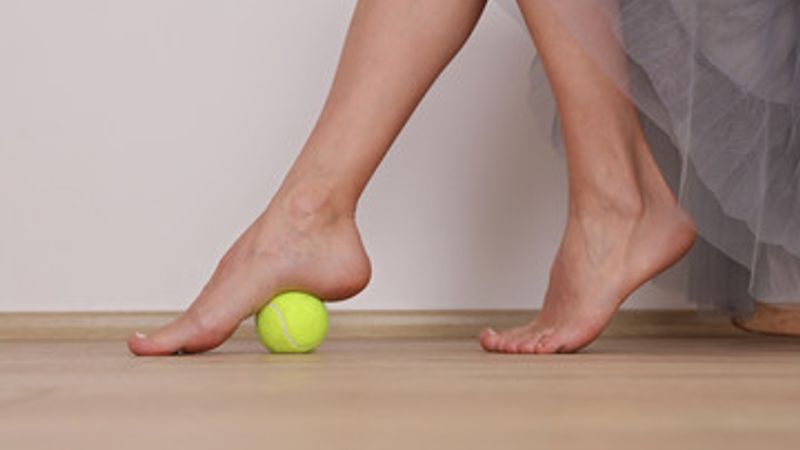

Our Review Process
Our articles undergo extensive medical review by board-certified practitioners to confirm that all factual inferences with respect to medical conditions, symptoms, treatments, and protocols are legitimate, canonical, and adhere to current guidelines and the latest discoveries. Read more.
Our Editorial Team
Shifa Fatima, MSc.
Author
Dr. Apoorva T, MHM.
MEDICAL ADVISOR
Exercise for Diabetic Neuropathy
Several studies have demonstrated that aerobic exercise and physical fitness can aid diabetes in regulating their blood glucose levels and insulin sensitivity. Physical activity and exercise for diabetic neuropathy are essential components of a diabetes care strategy for preventing complications. Individuals with diabetic peripheral neuropathy should continuously keep track of their physical activity levels. Studies revealed that weight-bearing exercises do not increase the risk of developing foot ulcers. This changed the medical community's mind and confirmed that people with diabetic peripheral neuropathy might do weight-bearing exercises. They should, however, be diligent about wearing the appropriate footwear and inspecting their feet for any imperfections daily.
Table of Contents
What is Diabetic Neuropathy?
Diabetes causes neuropathy, which is a kind of nerve damage. High blood sugar (glucose) levels can harm your nerves all over your body. The nerves in your feet and legs are most commonly affected by diabetic neuropathy. The symptoms could range from soreness and numbness in your feet and legs to difficulties with your urinary tract, digestive system, heart, and blood vessels, depending on which nerves are impacted. Some persons may encounter minor indications and symptoms. Diabetic neuropathy, on the other hand, can be terribly uncomfortable and potentially fatal for certain people. It is a significant consequence of diabetes, affecting up to 50% of those diagnosed with the disorder. On the other hand, consistent blood sugar or glucose control and a healthy lifestyle can usually avoid or slow the progression of diabetic neuropathy.
Why is Exercise important in Diabetic Neuropathy?
Low-intensity workouts for diabetic neuropathy include strength training, balance training, resistance, balance, flexibility therapy and aerobic exercises for diabetes. Aerobic workouts include walking, swimming, and jumping on a mini-trampoline. Resistance training involves using weight machines such as leg extensions, leg presses, and others. Cardiovascular workouts boost cardiovascular intensity, muscle strength, balance and gait, and pain relief (by increasing pain intensity).
By reducing the incidence of foot ulcers and strengthening muscles, resistance exercise improves one's quality of life. Balance training enhances knee and ankle reflexes, resulting in better balance. Resistance, balance, and flexibility training improves balance, heightened awareness, social advantages, sensations, leg strength, and flexibility. Understanding a patient's specific needs and assisting in preventing and managing diabetic neuropathy and its effects are crucial to improving a patient's quality of life. For diabetic neuropathy, a combination of medicine, food glucose control, and regular exercise can help lower the risk. Read more about diabetes control programme.
Workouts for Diabetic Neuropathy
Prioritise these expert-approved workouts to reduce the dangers and maximise the potential benefits of exercise for diabetic neuropathy:
1. Low-impact Cardiovascular Exercise
The ability of cardio to enhance vascular health in adults with type 2 diabetes has been extensively documented, suggesting that it may aid those with diabetes-related neuropathy. According to the American Diabetes Association (ADA), aerobic exercise can help lower blood sugar and cholesterol levels, improve blood flow to your hands and feet, and improve nerve function.
Experts suggest avoiding pounding the pavement in favour of gentler, low-impact exercises like swimming and cycling to enhance blood flow while decreasing cuts, scratches, and blisters. If you're not the most balanced on a bike, stick to an indoor bike.
Regardless of which programme you choose, the American Diabetes Association recommends exercising for at least 30 minutes five days a week.
2. Strength Training (Seated)
Muscle, insulin, and vascular health are linked, with muscle acting as a sugar-burning furnace that helps your blood arteries pump blood to and from your heart. While weight-bearing exercises that keep you on your feet are great for getting the most out of each rep, exercising with a barbell over your back is probably not a smart choice if you're not particularly steady.
Check out your gym's leg extension, hamstring curl, and glute kickback machines for seated leg strengthening. Meanwhile, you may do various upper-body exercises while seated on a bench, from bicep curls to shoulder presses.
3. Balance and Stability Work
Diabetes-related neuropathy impairs nerve function and feeling in the feet, increasing the risk of falling. Those with diabetes-related neuropathy were found to be 23 times more likely to fall than those without in a recent study of elderly people. Balance and stability exercises can help you train your muscles and the nerves that regulate them to activate and work together properly.
The most important muscles for keeping you upright are your feet, legs, and core. Balance and stability work should be incorporated into every workout. One-legged exercises, practising walking in a straight line from heel to toe, and executing core workouts like planks, dead bugs, bird dogs, and cable chops are all highly recommended.

Mind-body Exercise
Yoga, tai chi, and active meditation may be what your nervous system needs. After all, research has shown that yoga can help with various neurological conditions. According to studies, yoga can help reduce stress, blood pressure, and inflammation, all of which can affect the progression of diabetes-related neuropathy. While not as demanding as cycling or weight training, yoga nonetheless gets your heart pumping and helps you grow muscle.
Execute your favourite mind-body technique in a manner that meets your needs and complements your other workouts. After a more intensive strength or cardio activity, a mild flow yoga practice, for example, can be used to recover.
Bottomline
Exercises such as strength training, functional training, low-impact aerobics, tai chi, and yoga have benefited peripheral neuropathy. By enhancing function and nerve transmission, these workouts may help to reduce pain and neuropathic symptoms.
Exercise for diabetic neuropathy also helps with glucose regulation and other linked issues, including obesity and hypertension. Although we feel that exercise is beneficial, you should discuss peripheral neuropathy exercise concerns with your doctor.
References
- https://www.everydayhealth.com/type-2-diabetes/living-with/best-exercises-managing-diabetic-neuropathy/
Disclaimer
This website's content is provided only for educational reasons and is not meant to be a replacement for professional medical advice. Due to individual differences, the reader should contact their physician to decide whether the material is applicable to their case.








